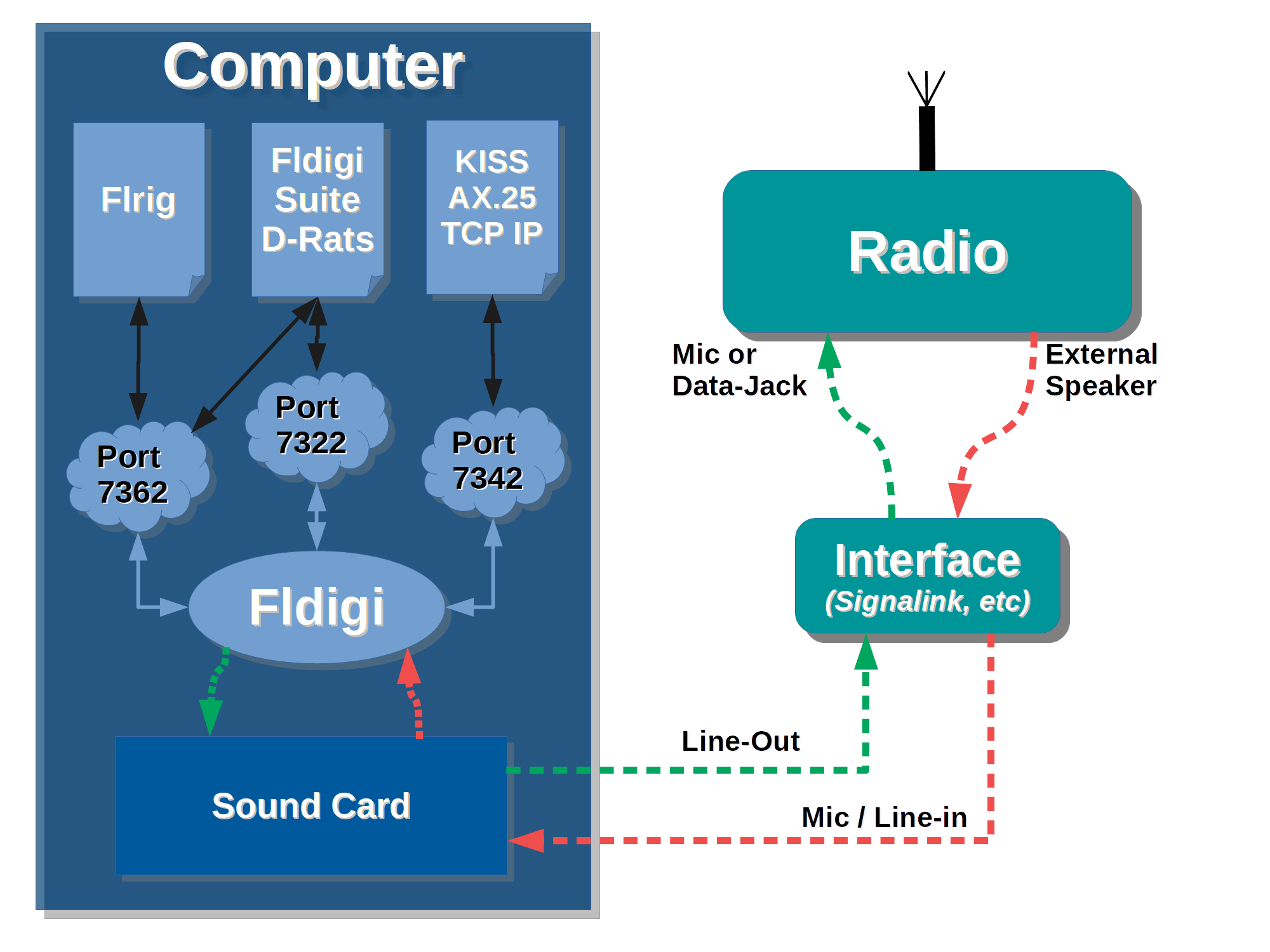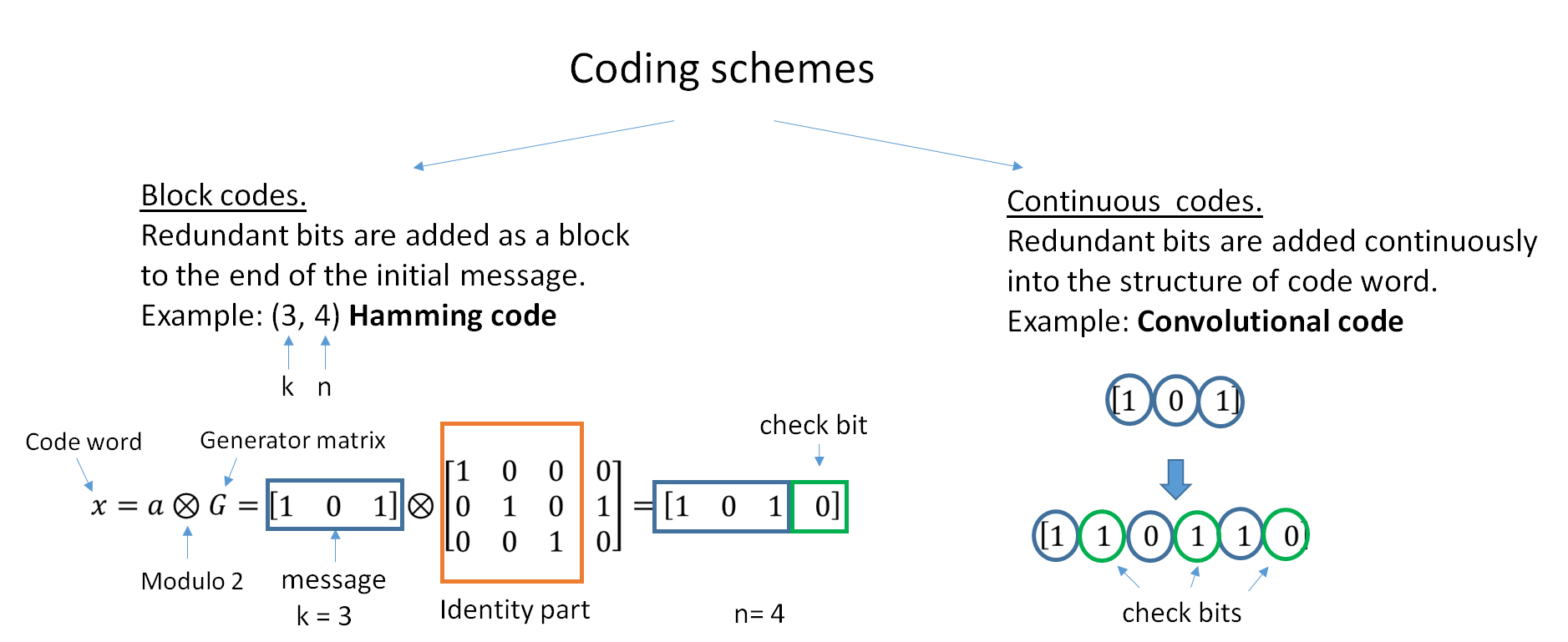|
PSK63
PSK63 (meaning Phase Shift Keying at a rate of 63 baud) is a digital radio modulation mode used primarily in the amateur radio field to conduct real-time keyboard-to-keyboard informal text chat between amateur radio operators. History In April 2003, Skip Teller, KH6TY, the creator of Digipan, requested an addition to Moe (AE4JY) Wheatley's PSKCore DLL to support the PSK63 mode. Subsequently, another mode - PSK125 - has been added to the PSKCore DLL. * Unlike PSK63F, PSK63 does not use forward error correction (FEC). * PSK 63 is twice as fast as PSK63F's but exactly the same speed as PSK125F. Mode Support PSK63 is now supported directly in KH6TY's own QuikPSK software, as well as in Digipan, AA6YQ's WinWarbler, F6CTE's MultiPSK, AE4JY's WinPSK, HB9DRV's DM780, PSK31 Deluxe, MMVARI, Fldigi, MIXW, and DL4RCK's RCKRtty. It is also supported in hardware by the Elecraft KX3. Others are likely to follow, now that version 1.17 of the PSKCore dll supports both PSK31 and PSK63. ... [...More Info...] [...Related Items...] OR: [Wikipedia] [Google] [Baidu] |
Amateur Radio
Amateur radio, also known as ham radio, is the use of the radio frequency spectrum for purposes of non-commercial exchange of messages, wireless experimentation, self-training, private recreation, radiosport, contesting, and emergency communications. The term "amateur" is used to specify "a duly authorised person interested in radioelectric practice with a purely personal aim and without pecuniary interest;" (either direct monetary or other similar reward) and to differentiate it from commercial broadcasting, public safety (such as police and fire), or professional two-way radio services (such as maritime, aviation, taxis, etc.). The amateur radio service (''amateur service'' and ''amateur-satellite service'') is established by the International Telecommunication Union (ITU) through the Radio Regulations. National governments regulate technical and operational characteristics of transmissions and issue individual station licenses with a unique identifying call sign, which m ... [...More Info...] [...Related Items...] OR: [Wikipedia] [Google] [Baidu] |
Phase Shift Keying
Phase-shift keying (PSK) is a digital modulation process which conveys data by changing (modulating) the phase of a constant frequency reference signal (the carrier wave). The modulation is accomplished by varying the sine and cosine inputs at a precise time. It is widely used for wireless LANs, RFID and Bluetooth communication. Any digital modulation scheme uses a finite number of distinct signals to represent digital data. PSK uses a finite number of phases, each assigned a unique pattern of binary digits. Usually, each phase encodes an equal number of bits. Each pattern of bits forms the symbol that is represented by the particular phase. The demodulator, which is designed specifically for the symbol-set used by the modulator, determines the phase of the received signal and maps it back to the symbol it represents, thus recovering the original data. This requires the receiver to be able to compare the phase of the received signal to a reference signal such a system is termed c ... [...More Info...] [...Related Items...] OR: [Wikipedia] [Google] [Baidu] |
Fldigi
Fldigi (short for Fast light digital) is a free and open-source program which allows an ordinary computer's sound card to be used as a simple two-way data modem. The software is mostly used by amateur radio operators who connect the microphone and headphone connections of an amateur radio SSB or FM transceiver to the computer's headphone and microphone connections, respectively. This interconnection creates a "sound card defined radio" whose available bandwidth is limited by the sound card's sample rate and the external radio's bandwidth. Such communications are normally done on the shortwave amateur radio bands in modes such as PSK31, MFSK, RTTY, Olivia, and CW (Morse code). Increasingly, the software is also being used for data on VHF and UHF frequencies using faster modes such as 8-PSK. Using this software, it is possible for amateur radio operators to communicate worldwide while using only a few watts of RF power. Fldigi software is also used for amateur r ... [...More Info...] [...Related Items...] OR: [Wikipedia] [Google] [Baidu] |
PSK31
PSK31 or "Phase Shift Keying, 31 Baud", also BPSK31 and QPSK31, is a popular computer-sound card-generated radioteletype mode, used primarily by amateur radio operators to conduct real-time keyboard-to-keyboard chat, most often using frequencies in the high frequency amateur radio bands (near-shortwave). PSK31 is distinguished from other digital modes in that it is specifically tuned to have a data rate close to typing speed, and has an extremely narrow bandwidth, allowing many conversations in the same bandwidth as a single voice channel. This narrow bandwidth makes better use of the RF energy in a very narrow space thus allowing relatively low-power equipment (5 watts) to communicate globally using the same skywave propagation used by shortwave radio stations. History PSK31 was developed and named by English amateur radio operator Peter Martinez (call sign G3PLX) and introduced to the wider amateur radio community in December 1998. The 31 baud BPSK modulation system u ... [...More Info...] [...Related Items...] OR: [Wikipedia] [Google] [Baidu] |
MT63
MT63 is a digital radio modulation mode for transmission in high-noise situations developed by Pawel Jalocha SP9VRC. MT63 is designed for keyboard-to-keyboard conversation modes, on HF amateur radio bands. Description MT63 distributes the encoding of each character over a long time period, and over several tones. This code and symbol spreading implementation is key to its robustness under less than ideal conditions. The MT63 mode is very tolerant of mistuning, as most software will handle 120 Hz tuning offsets under normal conditions. Latency One shortcoming of MT63 is that robustness is somewhat compromised with the short interleaver. Latency (delay between transmitted characters) is more than 6 seconds with the long interleaver. The typical character transmission delay is 12.8 seconds with long interleave mode. Media MT63 is seeing a resurgence in its popularity on shortwave with the VOA Radiogram but the software used to encode the text is not using the Varic ... [...More Info...] [...Related Items...] OR: [Wikipedia] [Google] [Baidu] |
Radioteletype
Radioteletype (RTTY) is a telecommunications system consisting originally of two or more electromechanical teleprinters in different locations connected by radio rather than a wired link. Radioteletype evolved from earlier landline teleprinter operations that began in the mid-1800s. The US Navy Department successfully tested printing telegraphy between an airplane and ground radio station in 1922. Later that year, the Radio Corporation of America successfully tested printing telegraphy via their Chatham, Massachusetts, radio station to the R.M.S. Majestic. Commercial RTTY systems were in active service between San Francisco and Honolulu as early as April 1932 and between San Francisco and New York City by 1934. The US military used radioteletype in the 1930s and expanded this usage during World War II. From the 1980s, teleprinters were replaced by personal computers (PCs) running software to emulate teleprinters. The term radioteletype is used to describe both the original radi ... [...More Info...] [...Related Items...] OR: [Wikipedia] [Google] [Baidu] |
Baud
In telecommunication and electronics, baud (; symbol: Bd) is a common unit of measurement of symbol rate, which is one of the components that determine the speed of communication over a data channel. It is the unit for symbol rate or modulation rate in symbols per second or pulses per second. It is the number of distinct symbol changes (signalling events) made to the transmission medium per second in a digitally modulated signal or a bd rate line code. Baud is related to ''gross bit rate'', which can be expressed in bits per second. If there are precisely two symbols in the system (typically 0 and 1), then baud and bit per second (bit/s) are equivalent. Naming The baud unit is named after Émile Baudot, the inventor of the Baudot code for telegraphy, and is represented according to the rules for SI units. That is, the first letter of its symbol is uppercase (Bd), but when the unit is spelled out, it should be written in lowercase (baud) except when it begins a sentence. ... [...More Info...] [...Related Items...] OR: [Wikipedia] [Google] [Baidu] |
Digital Data
Digital data, in information theory and information systems, is information represented as a string of discrete symbols each of which can take on one of only a finite number of values from some alphabet, such as letters or digits. An example is a text document, which consists of a string of alphanumeric characters . The most common form of digital data in modern information systems is '' binary data'', which is represented by a string of binary digits (bits) each of which can have one of two values, either 0 or 1. Digital data can be contrasted with ''analog data'', which is represented by a value from a continuous range of real numbers. Analog data is transmitted by an analog signal, which not only takes on continuous values, but can vary continuously with time, a continuous real-valued function of time. An example is the air pressure variation in a sound wave. The word ''digital'' comes from the same source as the words digit and ''digitus'' (the Latin word for '' finge ... [...More Info...] [...Related Items...] OR: [Wikipedia] [Google] [Baidu] |
:Category:Radio Modulation Modes
{{Commons cat, Radio modulation modes Signals sent by radio (or over long wires or when stored on magnetic media) must be modulated with some method that prevents their signal from degrading before the signals can be received. A transmitter and receiver must use the same ''mode'' of modulation to successfully communicate. Some of these are digital Digital usually refers to something using discrete digits, often binary digits. Technology and computing Hardware *Digital electronics, electronic circuits which operate using digital signals **Digital camera, which captures and stores digital i ... modulations, which typically modulate data to intermediate frequencies, which are then modulated to radio frequencies using another modulation mode such as FM or AM. Modulation modes Data transmission Physical layer protocols Modems ... [...More Info...] [...Related Items...] OR: [Wikipedia] [Google] [Baidu] |
Synchronous Conferencing
Synchronous conferencing is the formal term used in computing, in particular in computer-mediated communication, collaboration and learning, to describe technologies informally known as online chat. It is sometimes extended to include audio/video conferencing or instant messaging systems that provide a text-based multi-user chat function. The word ''synchronous'' is used to qualify the conferencing as real-time, as distinct from a system such as e-mail, where messages are left and answered later. Synchronous conferencing protocols include: * IRC (Internet Relay Chat) * PSYC (Protocol for Synchronous Conferencing) * SILC (Secure Internet Live Conferencing protocol) * XMPP (Extensible Messaging and Presence Protocol) * SIMPLE (instant messaging protocol) (Session Initiation Protocol for Instant Messaging and Presence Leveraging Extensions) Types According to the type of media used, synchronous conferencing can be divided into * audio conferencing: only audio is used ... [...More Info...] [...Related Items...] OR: [Wikipedia] [Google] [Baidu] |
Forward Error Correction
In computing, telecommunication, information theory, and coding theory, an error correction code, sometimes error correcting code, (ECC) is used for controlling errors in data over unreliable or noisy communication channels. The central idea is the sender encodes the message with redundant information in the form of an ECC. The redundancy allows the receiver to detect a limited number of errors that may occur anywhere in the message, and often to correct these errors without retransmission. The American mathematician Richard Hamming pioneered this field in the 1940s and invented the first error-correcting code in 1950: the Hamming (7,4) code. ECC contrasts with error detection in that errors that are encountered can be corrected, not simply detected. The advantage is that a system using ECC does not require a reverse channel to request retransmission of data when an error occurs. The downside is that there is a fixed overhead that is added to the message, thereby requiring a hi ... [...More Info...] [...Related Items...] OR: [Wikipedia] [Google] [Baidu] |







